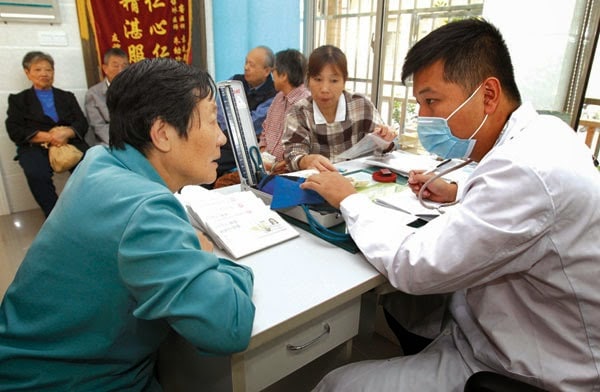Research fraud and inappropriate treatment

by Michael Woodhead
Last week I blogged about how so many medical journal articles in China are simply “vanity publications”, written by ghostwriters to satisfy the doctor’s need to achieve a quota of published articles. However, this week we see that there are also major problems with ‘serious’ research clinical trials carried out in China. An article in JAMA this week by Charles Seife reveals that the FDA found serious problems with the Chinese clinical trials of apixaban, a novel anticoagulant.
At one site the FDA concluded that patient records had been altered. When they investigated further the FDA inspectors declared that data from 23 other Chinese clinical trial sites was suspect and should be excluded from their evaluation of apixaban (Eliquis). We often hear that western pharma companies are shifting their R&D from the US and Europe to China. It may be cheaper but with reports like this you have to wonder if it is worth it in the long run.
Name in stem cell transplantation
China is also trying to make a name for itself in high tech areas such as stem cell transplantation. An announcement in the Shanghai media said the city was to build the world’s largest hospital for ‘blood diseases’. This seems to be a reference to hematopoietic stem cell transplant procedures for patients with blood diseases such as leukaemia. This is a highly specialised and expensive form of treatment for a small niche of patients (and often of limited benefit), so it is odd that a city that can’t even meet demand in its emergency departments is pushing ahead with a hospital for rare diseases. perhaps the explanation is that the project is being run by the China Stem Cell Group Co Ltd. This may be more about making profits than providing needed health facilities.
Online consulting in Guangdong hospital
China’s love of high tech for its own sake is also manifest in the move by a Guangdong hospital to set up 1000 telehealth stations in pharmacies to provide online consults. The move by the Second People’s Hospital of Guangdong to set up the Guangdong Online Hospital will reportedly include 200 doctors providing services via videolink. All sounds very modern, but how exactly does a doctor do a physical exam, order tests and imaging and provide ‘hands on’ care over a video link? It might be of limited value in follow up counselling consultations and for repeat prescriptions, but it sounds like a gimmick to me.
Online hospitals are supposed to help address the problem of overcrowded hospitals. I’m not sure how they will help the cancer patients who need a bed but can’t get one. In places such as Changsha in Hunan the hospital bed shortages are so acute that patients have to make do with ‘cancer hotels’ instead. Patients with cancer who require treatment but who are on the waiting list pay 1100 yuan a month to stay in hotels adjacent to the cancer hospitals so they can go into outpatients for treatment. Locals say that about half the hotels near the hospital are occupied by patients, who face 1-2 month waits for a bed.
Growing cancer in China
Breast cancer is an increasing concern in China, but rates are still not as high as in the west, perhaps due to dietary and lifestyle factors. Screening for breast cancer is also not part of the Chinese health system, although there has been some use of mammography. However ultrasound has been favoured by some Chinese clinicians, reportedly because it is more suitable to the smaller and more dense breast tissue of Chinese women. Now a study has confirmed that ultrasound is a more effective screening method for breast cancer in Chinese women. A study of more than 12,500 women who underwent either or both found that of the 30 cancers detected, five were in the mammography group and 11 in the ultrasound group, and 14 in the combined group. Ultrasound was more sensitive had the same specificity and positive predictive value as mammography. It was also considerably cheaper, costing $7876 to detect one cancer compared to $45 253 for mammography.
In other clinical news, metabolic syndrome (a highly dangerous combination of abnormal cholesterol, high blood pressure and pre-diabetes) was found to occur in 27% of Chinese people. A study of 15,477people in NE China found that 28% of men and 26% of women had metabolic syndrome. The condition was more common in Chinese on high incomes, those who ate more rice and those who did less physical activity – in other words, ‘to get rich is glorious’ but it also comes at a price of this disease of affluence.
Results of terrible air pollution
However, Chinese people might be forgiven for thinking twice about going for a jog, given the terrible air pollution in many cities. This has now been confirmed by Dr Liu Yu of the Key Laboratory of Exercise and Health Sciences at Shanghai University of Sport. This week he published an article in the BMJ which warned that the harms of ambient air pollution on the cardiovascular and respiratory systems might outweigh the benefits of exercise. He estimated that air pollution probably caused more than a thousand deaths a year in the city.
It’s not all bad news from China, though. A paper published by the WHO this week shows that Chinese healthcare workers have had great success in reducing deaths from HIV using a simple 50c antibiotic, co-trimoxazole. Their study showed that giving the antibiotic at the same time as antiretroviral reduced HIV deaths by 37% – a staggering achievement. If routinely use in China for HIV patients this could save thousands of lives among HIV positive people, the researchers sai.d Unfortunately, however, antibiotic use if often missed in this patient group.








